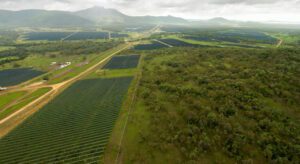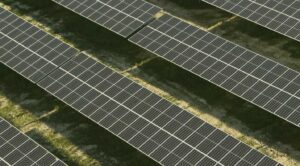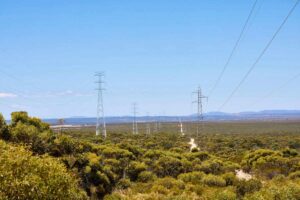Ferguson acknowledged the merit order effect
The merit order is alive and well. Even Energy Minister Martin Ferguson was moved to recognise this when he told a CEDA conference this week that the deployment of solar PV had played a key role in the suppressing of demand from the grid and, consequently, the lowering of electricity prices.
Why is this important? Well, it helps kill the argument, perpetuated by statutory authorities and utilities which know better, and some media, that green energy schemes do nothing but lift electricity prices. The merit order effect is what happens when renewable energy plants are deployed, and because the cost of fuel is zero, they get priority over fossil fuel generators in meeting demand.
Generators don’t like this because it’s not friendly to their business model, cuts their revenue, and slashes their profits. They have attempted to use the argument that the subsidies that help get the renewable energy plants deployed in the first place are distorting the market.
But the whole point of the subsidies is to get renewables deployed to the point where subsidies are no longer needed. Solar is just about there. At that point, the deployment of renewables has a long-lasting benefit to consumers, if not to coal and gas plants.
Green schemes reduce demand and costs
How much are renewables lowering costs? Ferguson said solar PV was one of a number of factors reducing the network load, which in turn had pushed wholesale electricity prices down to around half of what they were five years ago. Indeed, they are at the lowest level since the creation of the NEM more than a decade ago.
A report prepared by Green Energy Trading’s Ric Brazzale, on behalf of the Renewable Energy Certificate Agents Association, estimated that more than half of the 3.2 per cent cut in power use over the last three years was directly attributable to the deployment of rooftop solar PV, solar hot water systems and energy savings programs in Victoria and NSW, as well as the renewable energy target.
Brazzale says the conclusions are important, because they underline the point that market-based schemes, such as the Renewable Energy Target and the Energy Savings Schemes, have been successful in the large-scale deployment of greenhouse reduction technologies. “And they have done so in a way that reduces costs to customers,” he says. “It is the cost of transporting the electricity through monopoly network businesses that is out of control. The cost of actually producing the electricity is falling.”
Brazzale’s report concludes that policy makers need to address the runaway growth in network investment and to reduce rising peak summer demand caused by the installation of inefficient air conditioners. The introduction of mandatory targets for electricity network businesses to reduce peak demand through investment in better and more efficient technologies that reduce peak demand would be a good start.
Is the carbon price already redundant?
Ferguson conceded in his speech to CEDA that electricity demand is not expected to grow in the years ahead, citing also reduced demand from manufacturers, and a greater response to the higher electricity price increases caused mostly by the upgrade to grids. Given that, this graph below at the end of Brazzale’s report is particularly illuminating. Based on steady “gross demand” from 2011, it shows how much “net” demand might be reduced in coming years as a result of the various green and energy efficiency schemes, including a “base estimate” of around 400MW per annum of new rooftop PV.
 What this does not show is that this is around 15 per cent below previous forecasts for electricity demand by 2015. In an industry based around the assumption of selling and delivering more electrons each year, this is extraordinary. This does not just have an impact on the potential deployment of new gas plants, or the need for any new baseload energy, as Ferguson conceded and others have noted beforehand. It also suggests that assumptions made in the federal government’s carbon scheme are also out, and it may be that it is a lot easier than thought to gain emissions reductions, at least in the electricity sector, which accounts for just over one-third of the country’s emissions.
What this does not show is that this is around 15 per cent below previous forecasts for electricity demand by 2015. In an industry based around the assumption of selling and delivering more electrons each year, this is extraordinary. This does not just have an impact on the potential deployment of new gas plants, or the need for any new baseload energy, as Ferguson conceded and others have noted beforehand. It also suggests that assumptions made in the federal government’s carbon scheme are also out, and it may be that it is a lot easier than thought to gain emissions reductions, at least in the electricity sector, which accounts for just over one-third of the country’s emissions.
The Clean Energy Future package assumes that electricity sector emissions grow 8 per cent from 2010 to 2020, and Australia’s overall emissions – inflated by fugitive emissions from coal seam gas and the like – are likely to increase around 10 per cent from 2010 to the late 2020, before falling significantly as decarbonisation of the electricity sector accelerates. That prediction was based on a steady increase in electricity demand, partly offset by schemes such as the renewable energy target. The revised demand forecasts, the rapid deployment of solar PV, the impact of the energy efficiency and other green schemes, may see a much greater abatement from the energy sector than has been forecast.
The point, however, is not that the carbon price would be redundant. It is that emissions reduction is likely to be a lot cheaper than expected, and Australia could easily achieve a much higher than the bipartisan ambition of 5 per cent reduction by 2020. This was the point being made by research undertaken by ClimateWorks, which suggested that the domestic abatement from the carbon price and complementary measures could be twice as much as that predicted by the government. And, if further regulatory impediments were removed, it could be three times as much.
Reading the tea-leaves
The media industry’s struggle with disruptive technologies (in its case, the internet) has been a focal point of the news this week. Will the electricity industry learn anything from it?
Crikey publisher Eric Beecher nailed the issue when he described his attempts at warning the Fairfax board about the threat of the world-wide web as early as 2004. He made a salient point: “Almost every time a company fails or stumbles, industry experts saw the fall coming before the board. The board is often the last to know that its company has serious problems.” He also cited the work of Jim Collins, in his chronicle of failed companies, How The Mighty Fall. It described the five stages of the decline of once-successful companies:
• Stage 1: Hubris born of success
• Stage 2: Undisciplined pursuit of more
• Stage 3: Denial of risk and peril
• Stage 4: Grasping for salvation
• Stage 5: Capitulation to irrelevance or death.
Kodak was the most recent example of this. So are utilities about to follow in the same path? Geoff Bragg highlighted a key issue in this column for RenewEconomy this week, pointing out the attempts by utilities to reframe tariffs so that customers are required to pay large costs for use of the grid, no matter how little they use. The idea was to make a disruptive technology such as solar less appealing.
Another leading solar analyst said this was a predictable, if self-defeating, response: “It’s not a long-term strategy for them, because the harder they make it for PV to be deployed, the more people will do their own thing, with perverse outcomes.
“(It would be) much better if they agreed that we need a new market for distributed energy, where they, and their customers (horror!), as well as a range of other service providers can buy and sell energy, demand, storage, efficiency, voltage support, other ancillary services etc. They will probably have to be led kicking and screaming to this point, but it is where we have to go.
“Unfortunately, the state governments typically own the distribution networks, so they have very definite conflicts of interest in reducing their relevance or income. We will get to a point where the grid may need only to be a skinny link, with most of the supply and demand happening at a local, micro-grid level.”
Rio, the unhappy sequel
It’s rare that a movie sequel is ever as good as the original, and it seems the same can be said for the Rio Earth Conference. Around 130 country leaders are descending on the city this week for the Rio+2o summit. It promises to be an even larger turnout than at Copenhagen, and with an equally limp outcome. There will no last-minute machinations or examples of “ratf***ery” at this conference, because the 57-page declaration has already been watered down – by nearly the very same negotiators who fail repeatedly at climate change negotiations.
While George Bush senior scuttled progress on biodiversity at the 1992 Summit with the infamous declaration that the “American way of life is not negotiable,” George Monbiot this pointed out that the Obama administration had been even more obstructive, helping to remove from the agreed text mentions of the right to food, water, health, the rule of law, gender equality, a clear target of preventing two degrees of global warming and even a commitment to decouple economic growth from the use of natural resources, notwithstanding the bleak reports and warnings issued by the excellent United Nations Environment Program.
The biggest disappointment is the failure to take action on fossil fuel subsidies. Only one of the 283 paragraphs mentions fossil fuels at all, and it hardly shares the same commitment to end fossil fuel that has been parroted, to little effect, by the G20 and others. Apparently, it has something to do with “other people’s” subsidies. Australia is at least partially responsible for that failure. Even Ban-Ki Moon admitted the text had failed to live up to people’s hopes. Greenpeace was more to the point: “This is Rio Minus 20 which fails on equity, fails on ecology, fails on economy … text (is the) longest suicide note in history,” its CEO tweeted.








